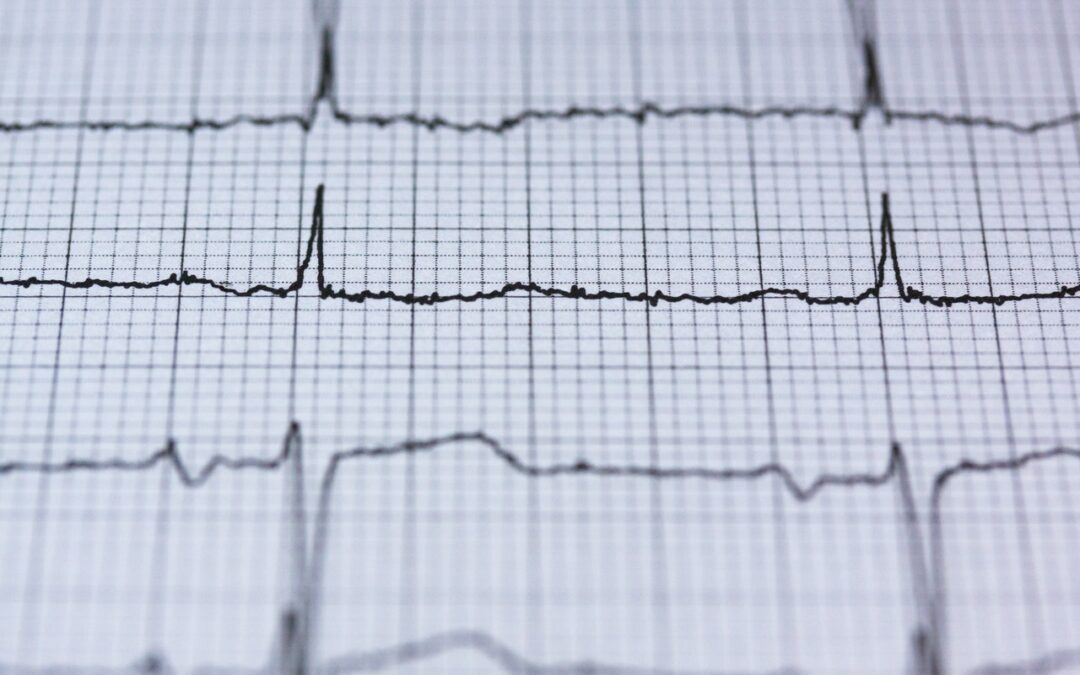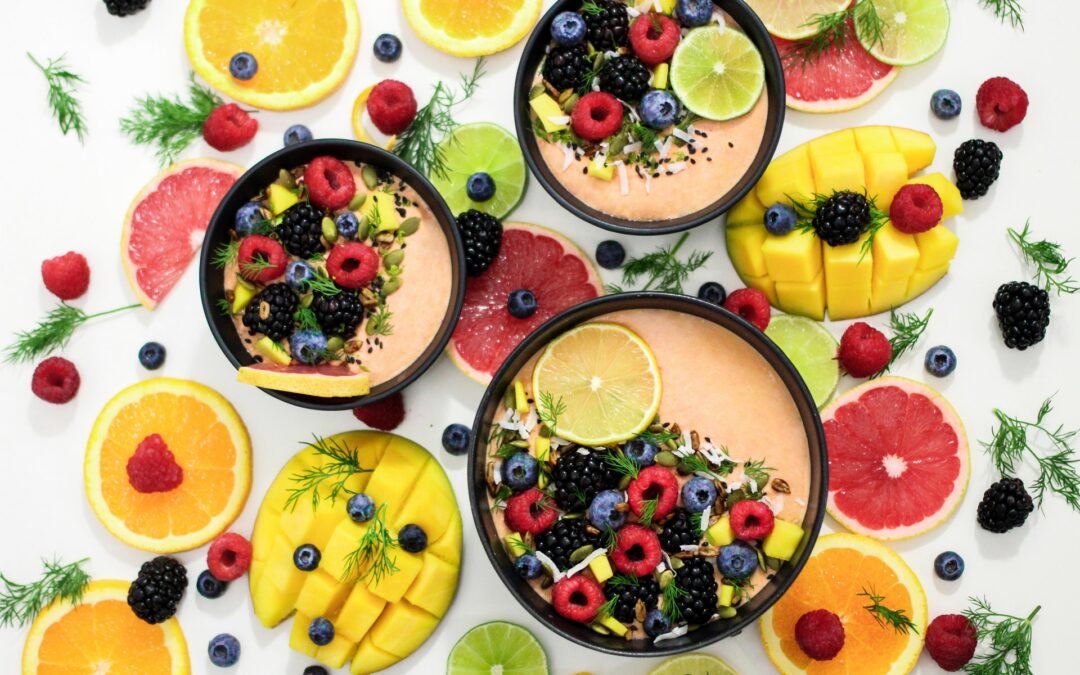
Nutrients and Compounds for Skin Conditions
Food is not just for sustenance, it holds the power to keep our bodies’ running efficiently and disease-free. Food also has the power to improve our skin and reverse various skin conditions! There are many vitamins, minerals, and other compounds that promote healthy skin. Some of these nutrients include omega 3 fatty acids, probiotics, vitamin E, and sulfur. Let’s discuss how various nutrients affect our skin health; including acne, rosacea, psoriasis, wrinkles, sun damage, and more!
Vitamin A
Vitamin A, or retinol, is one of the most widely acknowledged nutrients for healthy skin. It serves as an effective treatment for psoriasis and acne (including blackheads and whiteheads), as well as overall skin health. Vitamin A does this by decreasing the activity of oil glands and supporting the turnover (or recycling) of skin cells.
Vitamin A deficiency can cause rough, dry skin, appearing as raised bumps on the back of the arms. This condition is called hyperkeratosis pilaris and occurs in 40% of adults. Common medical treatments include synthetic retinoids, although skin conditions can be equally treated by eating more foods with vitamin A.
Preformed vitamin A is the active form of vitamin A and more easily absorbed by the body (with Provitamin A being the inactive form). The richest sources of preformed vitamin A are liver and cod liver oil. Other sources include eggs from pastured chickens, butter from pastured cows, and kidney. Aim to eat liver once or twice per week to improve skin conditions. If you wish to supplement, the best option is to take cod liver oil since it contains vitamin D as well, which balances out vitamin A and prevents vitamin A toxicity.
Vitamin A Benefits Those With: Psoriasis, acne, and hyperkeratosis pilaris
Omega-3 Fatty Acids
Omega-3 fatty acid is one of the most healthy fats necessary in a person’s diet. Omega-3 is a polyunsaturated fat and is highly anti-inflammatory. Omega-6 fatty acids are another polyunsaturated fat that is essential to our diet, however it must be balanced out by our omega-3 intake. Unfortunately, in a Western diet, most people consume way more omega-6 fatty acids than omega-3. The ratio of omega-6 to omega-3 is often 10 to 1 in Western societies, which is very unhealthy and offsets the anti-inflammatory actions of omega 3’s in the diet. An ideal ratio would be anywhere from 1:1 to 4:1 omega 6 to omega 3.
Without enough omega-3 fatty acids to balance out the omega-6’s, inflammation can perpetuate throughout the body. Furthermore, inflammatory skin conditions such as psoriasis, acne, and atopic dermatitis, are exacerbated by inflammation. In fact, supplementing with omega-3 fish oil has been shown to decrease the severity of psoriasis and atopic dermatitis. It also reduces the risk of acne development by preventing oily hair follicles and hyperkeratinization (the buildup of dead follicle cells). Lastly, taking omega-3 fish oil supplements block the inflammation caused by UV rays and help improve overall skin condition, leading to smoother skin.
Omega-3 fish oil is found in cold water fatty fish such as salmon, sardines, mackerel, black cod, and anchovies. Aim to eat at least two servings of these fish per week and you’ll get additional nutrients that help our skin such as vitamin D and selenium.
Be sure to avoid processed foods high in omega-6 fatty acids. These include industrial seed oils (like canola oil, corn oil, soybean oil, or nonspecific “vegetable oil”). Such oils are largely produced by Wesson, Crisco, and Mazola. Beware of any snack foods and processed foods that contain these oils, including crackers, chips, baked goods, frozen dinners, fried foods, and most breads and buns.
Omega-3 fatty acids Benefit Those With: Atopic dermatitis, psoriasis, and acne
Probiotics
Probiotics play a host of roles in the ongoing health and balance of our gut flora and digestive system. These beneficial bacteria also play a role in the connection between our gut and our skin, called the skin-gut-axis. Probiotics can help address a variety of skin conditions including atopic dermatitis, psoriasis, acne, and rosacea. They accomplish this through lowering systemic inflammation and oxidative stress, as well enhancing the lipid content found in our skin.
Probiotics can be found in fermented foods such as kimchi, sauerkraut, kefir, and yogurt. If you want to take probiotic supplements for skin health but you also have digestive issues such as IBS or SIBO, it is best to avoid the lactobacillus species of bacteria (most common probiotic found in supplements as well as probiotic foods). Instead, aim for soil-based organisms for your probiotic supplement as these do not contain the lactobacillus species but will still address skin conditions.
Probiotics Benefit Those With: Psoriasis, rosacea, atopic dermatitis, and acne
Sulfur
Sulfur is one of the most abundant minerals in the body, yet we rarely hear about its importance in nutrition. Sulfur has numerous benefits for our overall health and is an important compound for skin health, specifically with regard to wrinkles.
Sulfur is needed to produce collagen, a structural protein that makes up our connective tissue, including our skin. Failing to produce enough collagen contributes to the development of wrinkles. Getting enough sulfur from our diet is directly related to an increase in collagen production.
Sulfur is also needed to produce glutathione. Glutathione is a powerful antioxidant that prevents sun damage as well as cellular aging (including wrinkles) by reducing excess reactive oxygen species (unstable molecules). The amount of glutathione produced by our body depends on our intake of sulfur-containing amino acids found in food.
Sulfur-containing amino acids are found in animal products such as egg yolks, fish, poultry, and meat. Other foods with sulfur include garlic, onions, kale, brussel sprouts, asparagus, and fermented vegetables.
Sulfur Benefits Those Wanting: Protection against sun damage and wrinkles.
Pantothenic Acid (Vitamin B5)
There are eight types of B vitamins, one of which is called pantothenic acid. Pantothenic acid is found in nearly every type of food and plays important roles in energy metabolism and the production of protein and fat. It also is a required nutrient for skin cells to grow and regenerate. Specifically, pantothenic acid can regenerate connective tissue after it’s been injured, making it a great wound healing compound when applied directly to the skin. It also helps increase glutathione levels in our cells. Recall from earlier that glutathione is an antioxidant that protects against oxidative damage of our cells. When we are protected against this damage, the harmful effects of UV rays and pollutants are reduced, which, in turn, helps prevent wrinkles, sun damage, and associated skin cancer.
Pantothenic acid is found in abundance in egg yolk, liver, kidney, and broccoli. Other great sources of this B vitamin are chicken, fish, shellfish, avocados, sweet potatoes, mushrooms, and dairy products. Keep in mind that any water-soluble vitamin (including all the B vitamins) can be destroyed by heat and other processing methods. To retain the most of these vitamins in your food, it is best to cook them lightly over low heat or to eat them raw (if the food item allows).
Pantothenic Acid Benefits Those Wanting: Protection against sun damage, wrinkles, and skin cancer
Vitamin E
This vitamin is an antioxidant and the most common antioxidant found on our skin. Vitamin E helps protect the surface of our skin and is secreted by our skin oils after we eat foods that contain vitamin E. As an antioxidant, vitamin E protects us against free radical damage, particularly in our skin. This protection defends us against UV radiation from the sun, as well as wrinkles and skin cancer risk.
Vitamin E is found in an abundance of whole foods such as: asparagus, broccoli, brussel sprouts, collards, turnip greens, chard, spinach, kale, bell peppers, almonds, and sunflower seeds. Olive oil also contains some vitamin E. This vitamin is fat-soluble, so it is best to eat these foods along with a source of fat to increase the absorption of vitamin E.
Vitamin E Benefits Those Wanting: Protection against sun damage, wrinkles, and skin cancer
Vitamin K2
Vitamin K2 plays many beneficial roles in our health including protection from heart disease and cancer, healthy brain function, and promotion of bone metabolism. It also helps ensure the health of our skin by preventing premature aging and the appearance of wrinkles.
Specifically, vitamin K2 prevents the calcification of elastin. Elastin is a protein in our skin that helps return it to its original position after being poked or smooshed. In essence, elastin allows our skin to “spring back” into place, smoothing out wrinkles. In fact, those who cannot metabolize vitamin K develop premature wrinkling. Furthermore, vitamin K2 is critical for the functioning of vitamins A and D, which also promote skin health.
Vitamin K2 is found in high-fat dairy products like butter, cheese, and whole milk yogurt. Be sure these dairy products come from grass-fed cows, since grass contains vitamin K1 which converts to vitamin K2. This vitamin is also found in egg yolks, natto, liver, and fermented foods.
Vitamin K2 Benefits Those Wanting: Protection against wrinkles
The health of our skin is integrally related to the health of the rest of our body (and vice versa). As we have seen, each of these nutrients serve multiple functions aside from improving skin conditions. Including them in a regular rotation of whole-foods throughout the week will make the difference in the health of your skin as well as the proper functioning of your body. Don’t miss the opportunity to address and reverse your skin conditions through a nutrient-dense diet!




